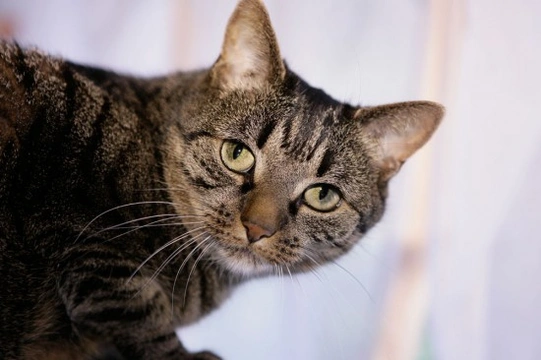
Stroke in cats - All about feline stroke
Most people will be at least peripherally aware of the human condition known as a stroke, but did you know that cats can also suffer from the same condition? Up until recently, veterinary professionals were not even sure if it was possible for a cat to have a stroke at all, and it was considered very rare to find circumstances that might have indicated a suspected stroke in cats. Recent veterinary advances and new testing protocols have demonstrated that feline stroke is actually much more common than was previously thought. However, the good news is that feline stroke is much less severe in the vast majority of cases than its human counterpart, and that cats generally effect a full recovery from a stroke, and within just a few weeks.If you are concerned about the possibility of your cat having a stroke, or would like to learn more about the signs and symptoms to be on the lookout for, then keep reading.
What is a stroke?
The term ‘stroke’ refers to a sudden loss or reduction of the blood supply that is reaching the brain, and falls into one of two categories in both cats and people:Haemorrihagic Stroke, which is the term used for a stroke caused by bleeding within the brain.Ischemic Stroke, the term for the brain suddenly losing its blood supply (due to issues such as a clot or thrombo-embolism cutting off the blood flow).The main issue that this loss of blood supply causes in the brain is the loss of oxygen delivery, which is essential to supporting life. Lack of oxygen to the brain disrupts the normal brain functions, and if the oxygen supply is absent for long enough, can cause permanent brain damage.
What causes feline strokes to occur?
There are various different reasons for why a stroke might occur in an otherwise seemingly healthy cat, some of which are explained below. While cats generally recover quickly and completely from a stroke, it is of course important to find out the underlying reasons for why the stroke occurred in the first place, in order to be able to try to stop it from happening again. Unfortunately, this may not be possible in all cases- Vets estimate that the cause of around 50% of feline strokes is never definitively identified.
Clotting problems
Haemorrhagic strokes are caused by blood leakages within the brain, and are sometimes contra-indicated in diseases and conditions that interfere with the natural blood clotting and healing processes. A congenital clotting disease (similar to haemophilia in people) can place your cat at increased risk for haemorrhagic stroke, as can conditions such as vasculitis, which is an inflammation of the arteries. Brain tumours, even if benign, can cause the same problems. Physical trauma to the head, such as your cat might suffer from if they got into an accident, can lead to stroke as a secondary side effect too. Finally, if your cat eats rodent poison or eats rodents that have ingested rodent poison, then the anti-clotting products that such poisons contain can lead to brain bleeds.
Diseases that lead to arterial changes
Any health condition that leads to a narrowing of the arteries or blockages in the arteries (such as kidney disease, heart conditions, thyroid problems, diabetes, high blood pressure or Cushing’s disease) can potentially lead to heightened risk factors for Ischemic stroke.
What are the symptoms of a feline stroke?
Symptoms of stroke in cats are not the same as those that you would see in a similarly affected person, and so it is important to know what to be on the lookout for. Any or all of the following can be indicative of a stroke, and so it is important to get your cat to the vet quickly if they begin displaying some of these signs:
- Generalised or partial seizures
- Head slightly tilted to one side
- Problems with balance
- Walking in circles
- Vision problems
- Reduced facial movement and/or partial facial paralysis
- Behavioural changes
- Dilated or unresponsive pupils
Diagnosing stroke in cats can be difficult, and none of the above symptoms should be taken as a definitive diagnosis. However much as is the case with people, the faster you can address the issues caused by a suspected stroke, the better the chance of your cat making a full and fast recovery.
Diagnosis and treatment for feline stroke
In order to definitively diagnose a stroke in your cat, your vet will need to run some imaging tests to get a good look at your cat’s brain. MRI imaging and CT scans are sometimes used, as is blood sampling and collecting a small amount of spinal fluid to check for inflammation.In terms of treating a stroke, there is no one definitive treatment protocol to be followed in cats. IF the cat suffers from seizures as part of the stroke or goes on to develop epilepsy (as happens in a very small proportion of cases) your vet may treat these immediate conditions. Generally, treatment for stroke involves careful observation and managing your cat’s lifestyle to accommodate for the problems caused by the stroke while they make their recovery. In a small proportion of cases, brain damage may occur or the ongoing treatment of stroke symptoms (such as seizures) can prove unmanageable, and unfortunately, a small proportion of cats that suffer from stroke do not recover.Cats do generally recover from a stroke fully and within a few weeks, a much better prognosis than is generally expected for people. How your cat responds during the first two weeks after a stroke has occurred is vital- if your cat begin to show signs of recovery, even slowly, the chances of a full recovery in time are very good.As always, if you are concerned about any aspect of your cat’s health, wellbeing or behaviour, consult your veterinary surgeon as soon as possible to give your cat the best chances of recovery.



